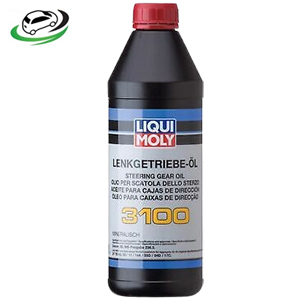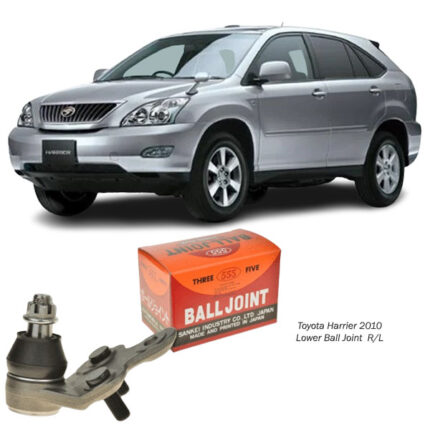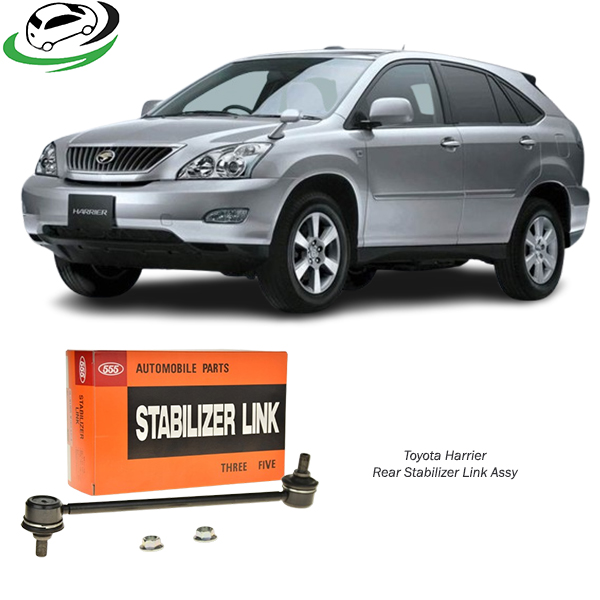-17%
The rear stabilizer link, also known as a sway bar link, is a small yet crucial component of a vehicle’s suspension system. It connects the rear stabilizer bar (sway bar) to the vehicle’s suspension, usually through the control arms or struts. Designed to reduce body roll during cornering, the stabilizer link ensures the car remains stable and provides a smoother, safer ride, especially on uneven surfaces.
Rear stabilizer links are generally present in vehicles that prioritize handling and comfort, including sedans, SUVs, and trucks. They work with the front suspension to ensure all four wheels remain balanced on the road, which improves the vehicle’s overall stability and control.
2. Function of Rear Stabilizer Links
Rear stabilizer links work in tandem with the stabilizer bar to balance the forces acting on the vehicle. The stabilizer bar is a metal rod that connects the left and right suspension on each axle. When a vehicle turns or encounters bumps, the body naturally wants to lean to one side, but the stabilizer bar resists this movement, forcing the suspension on both sides to respond together. The stabilizer links are the connectors that enable this transfer of force.
When a vehicle turns, centrifugal force pulls it away from the turn direction, causing body roll. The rear stabilizer link, attached to the suspension and the stabilizer bar, pulls on the opposite wheel, which limits the amount of roll. This improves handling by keeping the vehicle level, which maximizes tire contact with the road, resulting in better grip, stability, and passenger comfort.
3. Types of Rear Stabilizer Links
- Standard Links: These are the most common types of stabilizer links and are made from high-strength steel or aluminum for durability. They connect directly to the stabilizer bar and control arms using simple bushings.
- Adjustable Links: Adjustable stabilizer links are mainly used in performance or off-road vehicles, allowing drivers to customize the handling characteristics by adjusting the length of the link. This modification enhances grip and stability under different driving conditions.
- Heavy-Duty Links: Constructed with reinforced materials, heavy-duty stabilizer links are found in trucks, SUVs, or performance vehicles. They are designed to handle more stress, last longer, and improve off-road stability.
4. Benefits of Rear Stabilizer Links
- Improved Handling and Stability: Rear stabilizer links improve cornering stability by reducing body roll, which enhances handling precision and driver confidence.
- Enhanced Ride Comfort: By reducing the roll and swaying motions, stabilizer links contribute to a smoother, more comfortable ride, especially on uneven terrain.
- Better Road Contact: The stabilizer links ensure that the tires maintain better contact with the road, improving traction and braking performance.
- Increased Safety: Stability while cornering and during evasive maneuvers enhances vehicle safety by reducing the likelihood of skidding or losing control.
- Longer Suspension Life: By absorbing some of the forces experienced during turns and bumps, stabilizer links help protect other suspension components from premature wear and tear.
5. Signs of Worn or Damaged Rear Stabilizer Links
Rear stabilizer links are prone to wear due to the stress they encounter in regular driving. Recognizing the signs of worn or damaged links is key to maintaining handling and safety:
- Clunking or Rattling Noise: One of the most common symptoms of a failing stabilizer link is a clunking noise coming from the rear suspension area, particularly when going over bumps or making turns.
- Increased Body Roll: If the vehicle starts leaning more during turns, this can indicate that the stabilizer links or the stabilizer bar are compromised.
- Poor Handling: A worn link may lead to less responsive handling, which can make the car feel loose or unsteady on the road.
- Visible Damage or Wear: During visual inspection, you may see that the stabilizer link bushings or ball joints are cracked, loose, or damaged, indicating a need for replacement.
6. Maintenance Tips for Rear Stabilizer Links
To ensure that rear stabilizer links function effectively, regular maintenance is essential:
- Inspect Regularly: Check the stabilizer links and bushings for visible signs of wear, such as cracks, corrosion, or looseness. This is best done during routine vehicle maintenance or tire rotations.
- Lubricate When Necessary: Some stabilizer links require lubrication to keep the bushings or joints functioning smoothly, though many modern links are sealed and do not require lubrication.
- Replace in Pairs: If one stabilizer link is worn or damaged, it’s a good practice to replace both links on the same axle. This keeps the suspension balanced and ensures even wear.
- Avoid Overloading the Vehicle: Excess weight increases the strain on the suspension system, including the stabilizer links, leading to faster wear.
- Professional Alignment: After replacing stabilizer links, having a professional alignment performed can help ensure that all suspension components work harmoniously for optimal handling.
7. Replacement and Installation
Replacing rear stabilizer links typically involves removing the wheels and disconnecting the stabilizer bar from the control arms. The stabilizer links are then unbolted from both ends and removed. New stabilizer links are then installed in the same manner, and bolts are torqued to the manufacturer’s specifications.
Because stabilizer links are exposed to debris, road salts, and moisture, they can corrode and become difficult to remove. Proper tools, like breaker bars or impact wrenches, are often needed. While many vehicle owners choose to replace stabilizer links themselves, a mechanic can complete the task quickly and ensure all parts are securely fastened.
8. Common Issues with Rear Stabilizer Links
- Wear and Tear: Stabilizer links are often exposed to rough driving conditions, leading to wear on the joints and bushings.
- Rust and Corrosion: Moisture and salt can cause rust, especially if the vehicle frequently travels on wet or salted roads.
- Impact Damage: Potholes, curbs, or other impacts can damage stabilizer links and reduce their effectiveness.
- Premature Bushing Wear: In some cases, the bushings on stabilizer links can wear out prematurely, especially in areas with harsh climates or poor road conditions.
9. Improving Rear Stabilizer Link Longevity
To maximize the lifespan of rear stabilizer links:
- Drive Cautiously on Rough Roads: Avoiding potholes and other road hazards can reduce stress on the stabilizer links and suspension components.
- Regularly Check for Rust: If you drive in areas with high moisture or salted roads, clean and inspect the suspension components regularly to prevent rust buildup.
- Use High-Quality Replacement Parts: When it’s time to replace stabilizer links, using high-quality or OEM (Original Equipment Manufacturer) parts can ensure durability and better performance.
- Upgrade to Heavy-Duty Links if Needed: For off-road or high-performance vehicles, investing in heavy-duty stabilizer links can provide additional durability and improved handling.
10. Conclusion
Rear stabilizer links are vital for maintaining vehicle stability, handling, and safety. By connecting the rear suspension components with the stabilizer bar, they ensure a smooth and balanced ride, especially during turns and on uneven surfaces. Understanding the functions, benefits, and maintenance needs of rear stabilizer links helps in maintaining a safe and comfortable driving experience. With proper care and timely replacements, these components can support a smooth, controlled ride, enhancing both performance and safety for years to come.



